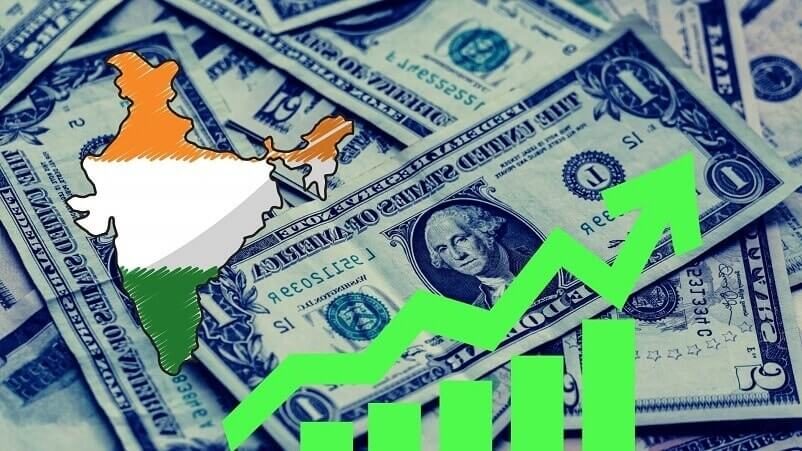Opening Anecdote:
Imagine standing on the precipice of a vast and ever-changing ocean, where the tides of global finance relentlessly surge forth. Within this realm of uncertainty, countries navigate their economic destinies by carefully managing their foreign exchange reserves. India, with its thriving economy and aspirational global stature, has been meticulously accumulating a formidable arsenal of forex reserves, bolstering its financial resilience and shaping its monetary policy trajectory. Dive into this captivating exploration as we unravel the fascinating world of India’s forex reserves, unearthing the strategic importance and pivotal role they play in shaping the nation’s economic landscape.

Image: www.indiablooms.com
Defining Forex Reserves and Their Significance:
Foreign exchange reserves, often referred to as forex reserves, are the stockpiles of foreign currencies, gold, and other international assets held by a nation’s central bank. These reserves serve as a crucial buffer, providing governments with the financial firepower to stabilize their currencies, manage external debt obligations, and mitigate the impact of external shocks. In the context of an increasingly interconnected global economy, forex reserves have emerged as a cornerstone of economic stability and monetary sovereignty.
India’s Forex Reserve Journey: A Story of Accumulation and Prudent Management:
India’s forex reserve story is one of steady accumulation, reflecting the nation’s growing economic prowess and prudent financial management. From modest beginnings of $5.8 billion in 1991, India’s forex reserves have surged to an impressive $612.73 billion as of March 2023, making it the fourth largest forex reserve holder globally. This remarkable growth has been fueled by robust foreign direct investment inflows, foreign currency remittances from the Indian diaspora, and a favorable balance of trade.
Composition of India’s Forex Reserves: A Diversified Portfolio for Stability:
India’s forex reserves are not confined to a single currency but rather encompass a diversified portfolio of assets, ensuring resilience against currency fluctuations and external shocks. The United States dollar remains the dominant currency in India’s forex reserves, accounting for approximately 56%, followed by the Euro (22%), and the British Pound (6%). Gold, a traditional safe-haven asset, constitutes around 7% of the total reserves, providing an additional layer of stability and diversification.

Image: www.coinnewsspan.com
Strategic Importance of Forex Reserves: A Shield for Economic Stability:
The strategic importance of forex reserves cannot be overstated. They serve as a critical buffer against external shocks, allowing India to intervene in foreign exchange markets to stabilize its currency, the rupee. This intervention prevents excessive currency volatility, which can harm trade, investment, and economic growth. Forex reserves also provide a sense of confidence among foreign investors, signaling India’s ability to meet external obligations and fostering economic stability.
Role of Forex Reserves in Monetary Policy: A Delicate Balancing Act:
Forex reserves play a pivotal role in India’s monetary policy framework. The Reserve Bank of India (RBI) uses forex reserves to manage the money supply and influence interest rates. By buying or selling foreign currencies, the RBI can control the rupee’s value, influencing the flow of goods and services, and ultimately shaping the overall inflation landscape. Forex reserves provide the RBI with the flexibility to implement monetary policy measures aimed at maintaining price stability and fostering economic growth.
Challenges in Managing Forex Reserves: Navigating Global Uncertainties:
Managing forex reserves is not without its challenges. Global economic uncertainties, geopolitical tensions, and currency fluctuations can all impact the stability of forex reserves. The COVID-19 pandemic and the ongoing Russia-Ukraine conflict have highlighted the need for countries to maintain adequate forex reserves to cushion against unforeseen events. India, like other nations, must continuously monitor global developments and adjust its forex reserve management strategies accordingly.
Outlook: India’s Forex Reserves Poised for Continued Growth:
India’s forex reserves are projected to continue their growth trajectory in the coming years. A robust macroeconomic outlook, driven by strong domestic demand and foreign investment inflows, is expected to bolster forex reserves. India’s proactive approach to attracting foreign capital and its efforts to diversify its export base will further contribute to forex reserve accumulation. This continued growth will provide India with greater flexibility in managing external shocks and pursuing its long-term economic goals.
Analysis Of Forex Reserve In India Ppt
Conclusion: India’s Forex Reserves: A Bulwark of Economic Resilience and Strategic Prowess:
India’s forex reserves have emerged as a cornerstone of the nation’s economic resilience and monetary policy prowess. The steady accumulation and prudent management of forex reserves have provided India with a strong buffer against external shocks, allowing it to maintain currency stability and pursue its economic growth aspirations. As the global economic landscape continues to evolve, India’s forex reserves will remain a vital tool for navigating uncertainty, safeguarding economic stability, and shaping the nation’s financial destiny. India’s continued focus on economic reforms, prudent financial management, and global economic integration will undoubtedly reinforce the strength of its forex reserves, ensuring a bright and prosperous future for the nation.






